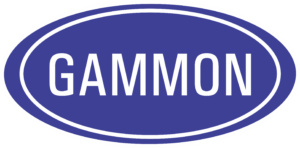A hundred years ago, you could buy patent medicines that were claimed by the salesmen to cure everything from sore feet to blindness. People bought them in desperation for a cure. With ever increasing frequency when a jet fuel problem occurs, we are hearing people exclaim desperately, “Maybe we should consider a salt tower.” Somehow, there has developed (mostly in the USA) an idea that salt will do everything, including removing dirt, water, surfactants and micro-organisms.
We thought it would be useful to review this subject and identify just what this equipment can do. First of all, the correct name is “salt drier”, not “salt tower”, in spite of the fact that they are often big and tall, like a tower. A salt drier does exactly what its name implies; it “dries” and it does it by an elementary process of dissolving salt into water to make brine. Everyone knows that brine is heavier than ordinary water – brine settles more rapidly than water.
Basically, all that is needed is to put rock salt in a vessel and pump fuel through the salt. It is an ancient process that has been used by refiners for decades.
Salt does not remove dirt, and it does not remove surfactants or micro-organisms. However, a system that has no water will grow no micro-organisms. The really interesting thing that salt does is to remove more than just the free water — it super-dries the fuel, removing a significant amount of the dissolved water. Actually, it is this capability that makes the process appealing to many people.
Suppose you have a situation where jet fuel is being transported by ship, barge or pipeline. Water is always present. If the fuel also contains surfactants and has a low MSEP rating (formerly called WSIM), the conventional procedure is to clay treat but the water degrades the clay, resulting in short life. We know that surfactants will burn in a turbine engine but if we do not remove them, the filter separators will become disarmed and will not remove water. It is almost like going around in a revolving door.
Those who promote salt driers, use the following rationale:
- Dry the fuel well below saturation in the airport storage tanks.
- Use extreme care to prevent further water contact, but just in case some water does contaminate the system, it will re-dissolve into the fuel.
- Do not worry about disarming the coalescers with surfactant between the storage tanks and the aircraft, because there is no water to remove.
The fear in the minds of many people is that there will be a brine carry-over which might result in catastrophic corrosion of aircraft. Some aircraft did suffer severe salt corrosion several years ago, but it is not clear whether it was salt drier carry-over or simply sea water contamination. Intelligent design of salt driers and careful maintenance and operation on a continuing basis could surely offer complete safety. The maintenance practice of “taking action only if something goes wrong”, currently used at some airports today, is absolutely impossible with a salt drier. It is a chemical process plant and must be operated as such at all times.
Have you now decided that you really need a salt drier? Have you convinced yourself that the design engineers will “think of everything” to prevent salt carry-over? Have you also decided that your superb management skills will insure that the equipment will always be operated “by the book”?
If you answered “yes” to the above 3 question, maybe you should examine the basic premise – that if you super-dry the fuel, you have given yourself enough water re-dissolving capacity so that you do not have to worry that coalescers may be disarmed by surfactants. How much re-dissolving capacity do you have?
Jet fuel can hold roughly 70 ppm of water in solution at average temperatures. If you dry it to 20 ppm, you can afford to have 50 ppm of new water contact before you will have free water. Take a 5000 US gallon batch of jet fuel and calculate the amount of water we are talking about:
(5000 gal. x 50) ÷ 1,000,000 = 0.25 gal.
This means that one quart of water is your factor of safety In other words, if water accidentally gets into a 5000 gallon batch of fuel, one quart will dissolve and the remainder will be free water that the coalescers must remove to protect the aircraft. Is this factor of safety large enough? We don’t think it is because our experience shows that large amounts of water cause incidents. We have never heard of a real incident on a commercial jet airplane caused by a quart of water in 5000 gallons of fuel. An “incident” is usually 20, 60 or 130 gallons.
Can all airports use salt driers? Absolutely not! The cost is prohibitive for small and even the medium sized airports. It is not just the investment, it is the cost of qualified personnel to monitor the equipment.
In conclusion, we believe that salt driers can serve the very useful purpose of removing water before clay treatment to remove surfactants. The effective life of clay can be greatly extended if there is no water present. We simply do not agree that the surfactants should be left in the fuel. The filter separator must be given the capability of removing water in an emergency; surfactant contaminated coalescers cannot be relied upon to protect an airplane.

